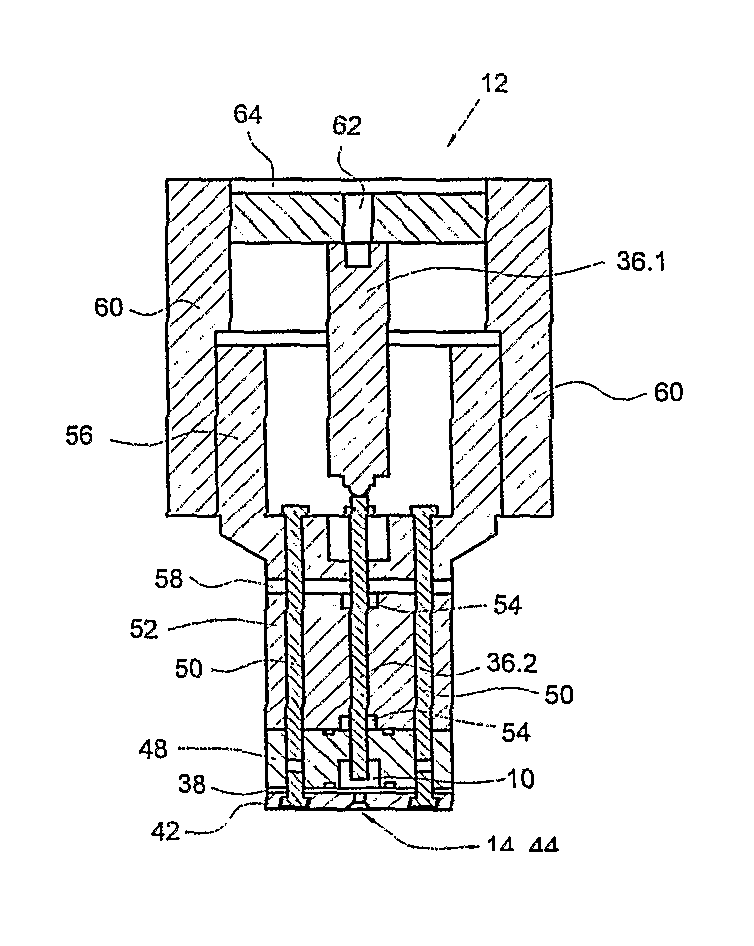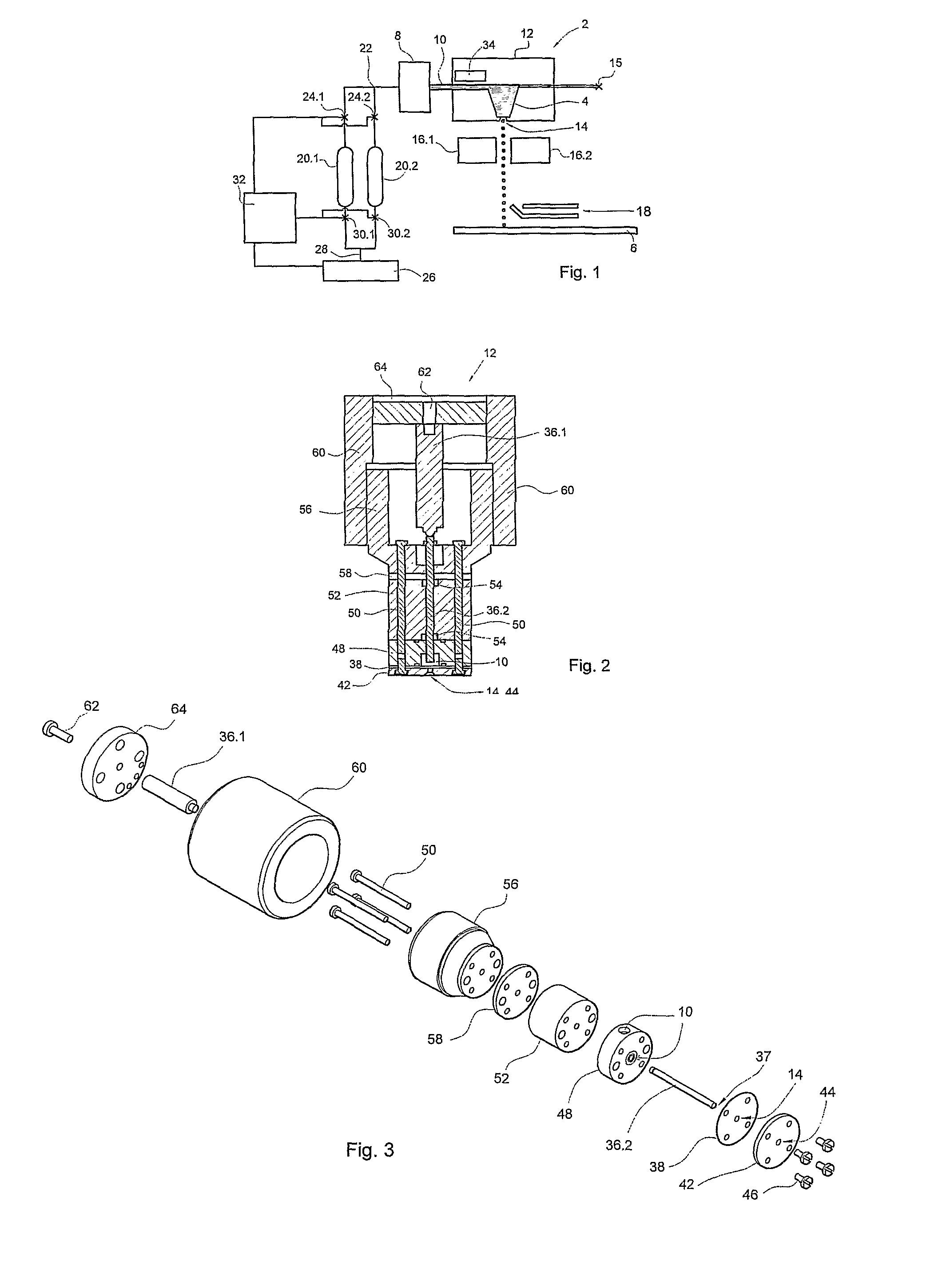Method of printing a fluid material using a continuous jet printing technique and curable compositions for use in said method
a technology of continuous jet printing and fluid material, which is applied in the direction of applications, coatings, inks, etc., can solve the problems of affecting the adhesion of ink and ink, limiting the application of uv-technology to specific inkjet printing methods, and unsuitable inkjet printing processes, etc., to achieve high viscosity and increase conductivity
- Summary
- Abstract
- Description
- Claims
- Application Information
AI Technical Summary
Benefits of technology
Problems solved by technology
Method used
Image
Examples
example 1
The following curable composition was prepared (PRUV-7):
[0131]TEGDMA (73.6 g), HEMA (31.8 g) and BisGMA (71.8 g) were blended until a homogenous mixture was obtained. BisGMA was heated using a hot air gun, as it was too viscous to be handled at room temperature. The viscosity of the acrylate mixture was sufficiently low for efficient stirring at room temperature. A solution of lithium perchlorate (5.2 g) in water (17.6 g) was dropwise added to the mechanically vigorously stirred TEGDMA / BisGMA mixture. A clear and homogenous formulation was obtained. Finally, photoinitiator Irgacure 819 (2 g) was added under stirring. The formulation was left to stir in the dark until all the photoinitiator was dissolved.
The curable product obtained had the following composition:
[0132]
TEGDMA36.4 wt % BisGMA35.5 wt % 2-Hydroxyethyl methacrylate15.7 wt % (HEMA)Water8.7 wt %LiClO42.6 wt %Irgacure 8191.0 wt %
The composition obtained had the following conductivity and low shear viscosity values:
[0133]
Cond...
example 2
The following composition was prepared (PRUV-8)
[0134]Cray Valley SR344 (148 g) and BisGMA (27 g) were blended until a homogenous mixture was obtained. BisGMA was heated using a hot air gun, as it was too viscous to be handled at room temperature. The viscosity of the acrylate mixture was sufficiently low for efficient stirring at room temperature. A solution of lithium perchlorate (5.6 g) in water (19.4 g) was dropwise added to the vigorously stirred SR344 / BisGMA mixture. A clear and homogenous formulation was obtained. Finally, photoinitiator Irgacure 819 (2 g) was added under stirring. The formulation was left to stir in the dark until all photoinitiator was dissolved.
The curable product obtained had the following composition:
[0135]
SR34473.3 wt % BisGMA13.4 wt % Water9.6 wt %LiClO42.8 wt %Irgacure 8191.0 wt %
The composition obtained had the following conductivity and low shear viscosity values:
[0136]
Conductivity:σ(21° C.) = 230 μS / cmσ(31° C.) = 380 μS / cmLow shear viscosity:η(22° C...
example 3
The following composition was prepared (PRUV-11)
[0137]TEGDMA (108.2 g), BisGMA (63.2 g) and SR344 (6.8 g) were blended until a homogenous mixture was obtained. BisGMA was heated using a hot air gun, as it was too viscous to be handled at room temperature. The viscosity of the acrylate mixture was sufficiently low for efficient stirring at room temperature. A solution of lithium trifluoromethanesulfonate (=lithium triflate) (9.8 g) in water (12 g) was dropwise added to the mechanically vigorously stirred TEGDMA / BisGMA / SR344 mixture. A clear and homogenous formulation was obtained. Finally, photoinitiator Irgacure 819 (2 g) was added under stirring. The formulation was left to stir in the dark until all photoinitiator was dissolved.
The curable product obtained had the following composition:
[0138]
TEGDMA53.6 wt % BisGMA31.3 wt % SR3443.4 wt %Water5.9 wt %LiCF3SO34.9 wt %Irgacure 8191.0 wt %
The composition obtained had the following conductivity and low shear viscosity values:
[0139]
Condu...
PUM
| Property | Measurement | Unit |
|---|---|---|
| pressure | aaaaa | aaaaa |
| pressure | aaaaa | aaaaa |
| dielectric constant | aaaaa | aaaaa |
Abstract
Description
Claims
Application Information
 Login to View More
Login to View More - R&D
- Intellectual Property
- Life Sciences
- Materials
- Tech Scout
- Unparalleled Data Quality
- Higher Quality Content
- 60% Fewer Hallucinations
Browse by: Latest US Patents, China's latest patents, Technical Efficacy Thesaurus, Application Domain, Technology Topic, Popular Technical Reports.
© 2025 PatSnap. All rights reserved.Legal|Privacy policy|Modern Slavery Act Transparency Statement|Sitemap|About US| Contact US: help@patsnap.com


